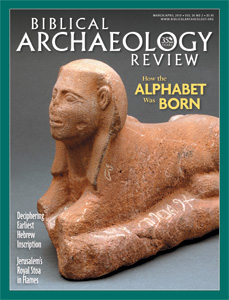 | |
| Editor | Glenn J. Corbett |
|---|---|
| Categories | Archaeology |
| Frequency | Quarterly |
| Circulation | 127,411 |
| Publisher | Biblical Archaeology Society |
| Founder | Hershel Shanks |
| Founded | 1975 |
| Country | United States |
| Based in | Washington, D.C. |
| Website | www |
| ISSN | 0098-9444 |
Biblical Archaeology Review, sometimes referred to as BAR, is a quarterly magazine. It seeks to connect the academic study of archaeology to a broad general audience seeking to understand the world of the Bible, the Near East, and the Middle East (Syro-Palestine and the Levant). Since its first issue in 1975, [1] [2] Biblical Archaeology Review has covered the latest discoveries and controversies in the archaeology of Israel, Turkey, Jordan and the surrounding regions as well as the newest scholarly insights into both the Hebrew Bible and the New Testament. The magazine is published by the nonsectarian and nonprofit Biblical Archaeology Society (BAS).